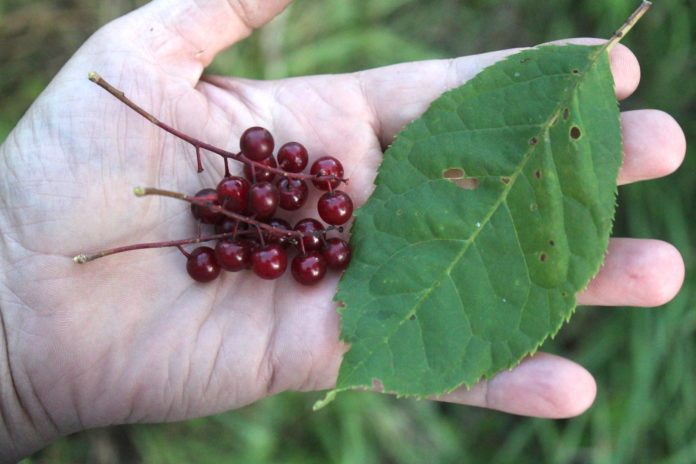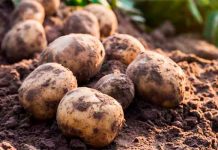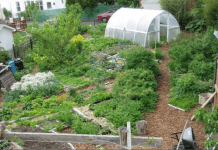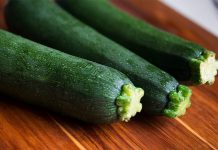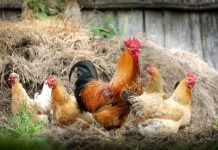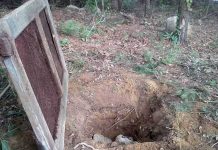I’ll admit the name “chokecherry” doesn’t exactly get your mouth watering. Anything with “choke” in the name sounds like trouble. The other common names bitter berry and bird cherry aren’t any more appetizing, but chokecherries are not only edible, but they’re also delicious. The berries can be a bit astringent right off the bush, but that astringency fades away with the proper preparation.
Chokecherries were a staple of the Native American diet, and are perfect for jelly, fruit leather, and homemade wine.
Chokecherries (Prunus virginiana) is in the stone fruit family, along with cherries and plums. Unlike wild pin cherries, which produce individual fruits to be spread by birds, chokecherries produce large fruit clusters for easy picking by mammalian hands.
Chokecherries have evolved alongside small mammals, and they’re hoping to be picked by the handful. Dexterous mammals like raccoons then carefully strip the flavorful fruit away from the toxic seeds.
Where to Find Chokecherries
The berries grow wild on small tree-like shrubs, often along woods edges or roadsides. They need full sun to thrive, so you won’t find them deep in the woods. In early August, Vermont roadsides are dotted with bushes showcasing their bright red fruit. The fruit won’t be ripe until they take on a deeper color, but this bright red fruit is easy to spot on a casual drive.
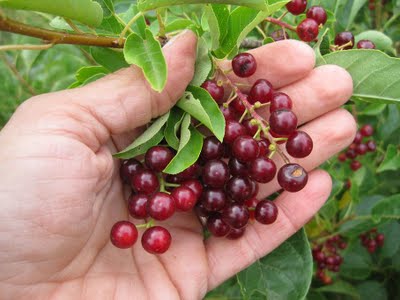

Once you see the first bright red berries, take a walk or drive around your neighborhood. It’s easy to spot chokecherries right at the edge of the woods or in unmowed medians. Be patient though, these bright red berries aren’t ready yet! They’re too bitter at this stage, but once they’re fully ripe, chokecherries are harder to spot. Note their location, and check back a week or two later.
In most locations, chokecherry season is Mid-August to early September. If you pick unripe fruit, you’re not doing the plant or yourself any favors. Unripe chokecherries taste horrible, and I’d venture to guess foragers that hate chokecherries just haven’t picked them when they’re ripe.
Identifying Chokecherry
The two main distinguishing features of chokecherries are that they grow in bunches and they have a single large seed. Common buckthorn (Rhamnus cathartica) is listed as a “toxic look-alike” but once you’ve seen both shrubs, it’s obvious which is which. Buckthorn fruit does not grow in fruit clusters, though the fruit does tend to cluster together on the main branch. It also has several small seeds within each fruit. Buckthorn bushes also have lost of intensely sharp thorns that are often several inches long, while chokecherry bushes are completely thornless.
Chokecherry Fruit
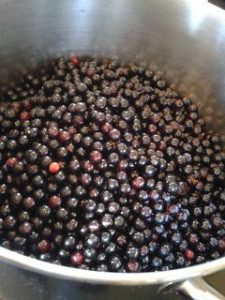

The fruit of the chokecherry plant is small and round and hangs in easy to pick clusters off the plant. They start out a light green color, and then progress through yellow, to bright red and then finally a deep red when ripe. Some plants make it all the way to a nearly black color before the animals get to them, but around here the bushes are picked clean by raccoons by the time they reach a deep plum red.
The tiny handful is the proud haul of my 3-year-old daughter, every single berry off a chokecherry bush that was covered with fruit just a few days before. These are the only chokecherries the raccoons left, and they were sweet and pleasant. In areas with fewer predators, they may ripen to a deeper color, but we’re happy with these around here.
Chokecherry Seeds
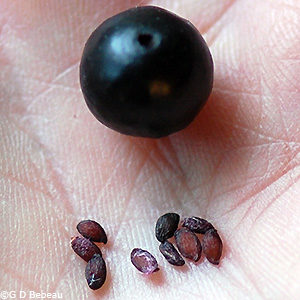

Inside each chokecherry fruit is a relatively large seed. I would estimate that the seed takes up somewhere between 1/3 and 1/2 of the volume of the fruit. The seeds are toxic, and they can spoil a chokecherry jelly if they’re left in too long. Generally, chokecherries are boiled for a short time until the fruit falls from the seed. The seeds are then filtered out through a colander as soon as the fruit is loose.
If you want to plant chokecherry seeds, save some aside and don’t cook them. Chokecherry seeds require a period of cold dormancy before they’ll sprout, and they need to be stored in the fridge or freezer for 3 months before planting. In the wild, they grow in zones 2 to 7. If you get seeds and manually cold stratify them, the plants can thrive just about anywhere, even very hot climates. Store the berries, or just the seeds once you’ve eaten the raw fruit in the freezer over the winter months and plant the following spring.
Related: How Do You Know if a Canning Recipe is Safe
Chokecherry Leaves
The leaves of chokecherry plants vary in size from about 2 to 4 inches. Like most stone fruits, they’re long and oval-shaped and come to a point at the end. The edges have small serrations, and the leaves themselves come out alternately from the stem.


Chokecherry Bark
The bark of the chokecherry plant has small raised dimples, like many types of cherry. They’re much less pronounced than the dimples on the sour cherries I grow in my yard or the other forms of wild cherry found locally.
Are Chokecherries Toxic?
Chokecherry fruit is definitely edible and not toxic. The seeds are a bit tricky though. Chokecherry seeds contain a cyanide compound, like apple seeds, and they can be toxic if eaten raw in large quantities. That said, the traditional Native American way of preparing chokecherries involves pounding the whole fruit and seed and drying it in the sun.
There’s a theory that the toxins in the seeds are denatured by sun drying, and that allowed the Native American people to digest the nutrients in both the fruit and seeds. Chokecherry seeds contain significant amounts of oil and protein, and it’s a shame to throw away all those nutrients. Modern science hasn’t confirmed that sun-drying renders the seeds safe to eat. Obviously, use your best judgment.
Other parts of the chokecherry plant, including leaves, stems, and bark are toxic to animal life and can kill grazing animals if eaten in quantity.
How to Use Chokecherries
If you’ve timed it right, and beaten the raccoons to the chokecherries, you now have buckets of fruit. What on earth do you do with chokecherries?
Honestly, I think they taste pretty decent fresh. If the chokecherries you harvested are unpalatably bitter, they weren’t ripe. Some varieties ripen at a deep red, and others need to be nearly black before their ripe. Others need to turn nearly black and stay that way for a week or two before they’re ripe on the bush. Give them a try right off the bush and be sure they’re ripe before you harvest.
If they’re fully ripe, they’re quite sweet with only the tiniest hints of astringency. They’re better than wild plums in my book and often better (and more dependably tasty) than most wild apples we find around here.
Storing the chokecherry harvest for 2-3 days in the refrigerator will increase their sweetness and improve their flavor as well. There’s something about the astringent compounds that mellow after harvest, but they’ll spoil quickly out of the fridge.
Chokecherry Fruit Leather
Samuel Thayer, the author of A Forager’s Harvest says that he prepares chokecherries raw and without sugar by storing them in the refrigerator, and then turning the fruit into fruit leather:
“Almost all of the chokecherries that I eat are in the form of dried fruit leather. This is convenient, delicious and healthy since it is unadulterated by the addition of sugar. The secret to making really good chokecherry leather is to pick very ripe cherries and then let them sit in the refrigerator for a day or two before straining. This aging facilitates some chemical change that significantly reduces the astringency of the fruit’s pulp.”
He extracts the pulp from the seeds without cooking by using a food strainer with the tension spring removed. I’ve tried with the tension spring left in, and it clogs the whole thing into a mess, so be sure to remove the tension spring.
Related: How to Make Fruit Leather and Add It To Your Stockpiles
Chokecherry Jelly
Most people prefer to heavily sweeten chokecherries, and they’re most commonly made into a chokecherry jelly. Simply cook the fruit in a bit of water until the fruit pulp falls away from the seeds. Add in sugar and a bit of pectin and can it up.
Recipes vary widely in sugar content, and I think it has a lot to do with the flavor of the chokecherries harvested. Some are much sweeter than others, so it’s hard to give a definite amount. Looking at chokecherry jelly recipes from writers across the country, they generally use 1/2 to 1 cup of sugar for every pound of freshly picked berries. Others didn’t weight the fruit but measured the extracted juice once it was cooked off the pits. They used between 1/4 and 1/2 cup of sugar for each cup of chokecherry juice.
Most recipes also add around 1 tablespoon of lemon juice for each cup of chokecherry juice.
Chokecherry wine
Chokecherry wine combines the fruit with sugar, and the natural astringency of chokecherries works well in fruit wine. The juice can be extracted in the same way you would for chokecherry jelly, or you can muddle the chokecherries in a little bit of sugar as I did with this rhubarb wine. The sugar pulls the juice from the fruit, but in the case of chokecherries, don’t leave the pits in there too long or it’ll flavor the finished wine.
A one-gallon recipe for chokecherry wine uses 2-3 pounds of chokecherries plus 2-3 pounds of sugar. You’ll also need an acid and tannin source. I’d suggest 2 tbsp lemon juice and 1 cup strongly brewed black tea for acid and tannin, but there are plenty of other options. You can read more about making small-batch wines and how to achieve the right balance in this guide to small batch winemaking.



